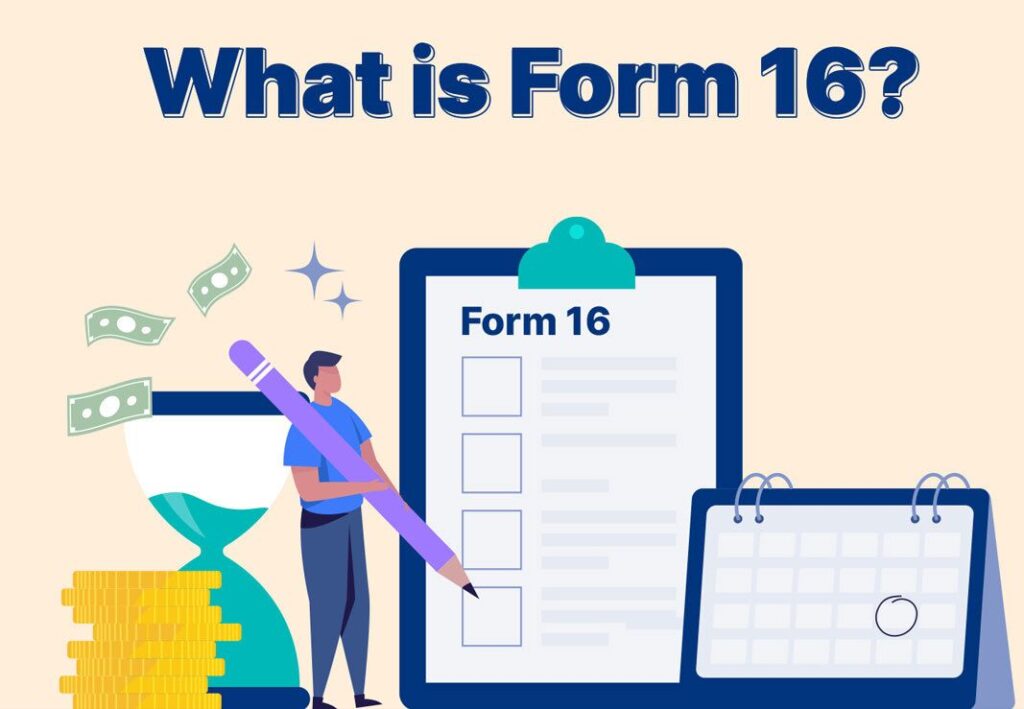Form 16 in India is a vital document for salaried individuals, summarizing income and tax deductions for seamless ITR filing. It simplifies the tax filing process and also ensures compliance with the Income Tax Act. With India’s tax base growing understanding Form 16 is essential. What is it, and how does it help? Let’s break it down.
What Is Form 16?
Form 16 is a TDS certificate that employers must issue to their employees annually under Section 203 of the Income Tax Act. It shows the salary paid and the TDS deducted during the financial year. It helps employees reconcile their tax liabilities and file returns accurately. This document is divided into two parts:
- Part A: Details the employer’s TAN, employee’s PAN, summary of TDS deposited, and period of employment.
- Part B: Contains a detailed salary breakup, deductions claimed under Chapter VI-A (like Section 80C, 80D), and net taxable income.
According to the Income Tax Department of India, employers must issue Form 16 by June 15 following the end of the financial year. Without it, salaried individuals may struggle to file their ITR correctly or face challenges in getting refunds from the Income Tax Department.
Benefits: Simplifies Tax Filing
Form 16 in India simplifies income tax return filing. Since all details are pre-filled, it reduces the risk of errors. In addition, it helps you identify tax-saving opportunities like missed deductions or eligible reimbursements. Moreover, if you’re managing personal or business finances, TDS documentation is vital.
It serves as income proof for financial activities like applying for home loans or credit cards. It also helps claim deductions like ₹1.5 lakh under Section 80C, thus boosting savings. A recent Economic Times report noted that over 85% of salaried taxpayers use Form 16 while filing ITR. For official resources, the Income Tax Department’s website offers updated guidelines on Form 16 issuance, verification, and related compliance.
Components and Key Rules:
- Part A includes your PAN, employer TAN, period of employment, and details of TDS deposited with the government.
- Part B provides a detailed salary breakdown, including allowances, deductions under Chapter VI-A (like 80C, 80D), and taxable income.
- Issuance: Employers must issue Form 16 by June 15 for the previous FY (e.g., June 15, 2025, for FY 2024-25).
For example, if you invested in ELSS or paid life insurance premiums, Part B will reflect the deductions. In addition, it shows the net tax payable or refundable.
Employers generate this form using the TRACES portal (TDS Reconciliation Analysis and Correction Enabling System), ensuring the data aligns with your TDS return. If you find errors, you can request a correction before filing your return.
How to Download Form 16:
Usually, your HR or payroll team will share Form 16 via email or the internal portal. However, if you didn’t receive it, request it directly. Employers are legally required to issue it if they deducted TDS from your salary.
To verify its authenticity:
- Check that your name, PAN, and assessment year are correct.
- Match TDS details with Form 26AS or AIS (Annual Information Statement).
- Ensure that Part A is digitally signed.
If discrepancies exist, address them immediately to avoid problems during return filing.
Conclusion:
Form 16 simplifies tax compliance, saving time and avoiding penalties, but requires diligent verification. By clearly outlining income, deductions, and TDS, it simplifies the income tax filing process and serves as valid proof of income for financial transactions. By understanding its structure and using it correctly, you can avoid common tax filing errors and ensure compliance with the Income Tax Act. Ready to file your ITR? Explore more tax insights now!
– Ketaki Dandekar (Team Arthology)
Read more about Form 16 here – https://cleartax.in/16
